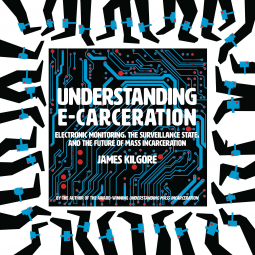
Understanding E-Carceration
Electronic Monitoring, the Surveillance State, and the Future of Mass Incarceration
by James Kilgore
This title was previously available on NetGalley and is now archived.
Send NetGalley books directly to your Kindle or Kindle app
1
To read on a Kindle or Kindle app, please add kindle@netgalley.com as an approved email address to receive files in your Amazon account. Click here for step-by-step instructions.
2
Also find your Kindle email address within your Amazon account, and enter it here.
Pub Date Jan 18 2022 | Archive Date Jan 18 2022
Talking about this book? Use #UnderstandingECarceration #NetGalley. More hashtag tips!
Description
A riveting primer on the growing trend of surveillance, monitoring, and control that is extending our prison system beyond physical walls and into a dark future—by the prize-winning author of Understanding Mass Incarceration
“James Kilgore is one of my favorite commentators regarding the phenomenon of mass incarceration and the necessity of pursuing truly transformative change.” —Michelle Alexander, author of The New Jim Crow
In the last decade, as the critique of mass incarceration has grown more powerful, many reformers have embraced changes that release people from prisons and jails. As educator, author, and activist James Kilgore brilliantly shows, these rapidly spreading reforms largely fall under the heading of “e-carceration”—a range of punitive technological interventions, from ankle monitors to facial recognition apps, that deprive people of their liberty, all in the name of ending mass incarceration.
E-carceration can block people’s access to employment, housing, healthcare, and even the chance to spend time with loved ones. Many of these technologies gather data that lands in corporate and government databases and may lead to further punishment or the marketing of their data to Big Tech.
This riveting primer on the world of techno-punishment comes from the author of award–winning Understanding Mass Incarceration. Himself a survivor of prison and e-carceration, Kilgore captures the breadth and complexity of these technologies and offers inspiring ideas on how to resist.
Available Editions
| EDITION | Other Format |
| ISBN | 9781620976142 |
| PRICE | $17.99 (USD) |
| PAGES | 224 |
Average rating from 3 members
Readers who liked this book also liked:
Noam Chomsky; José Mujica; Saúl Alvídrez
Essays & Collections, Multicultural Interest, Politics & Current Affairs







